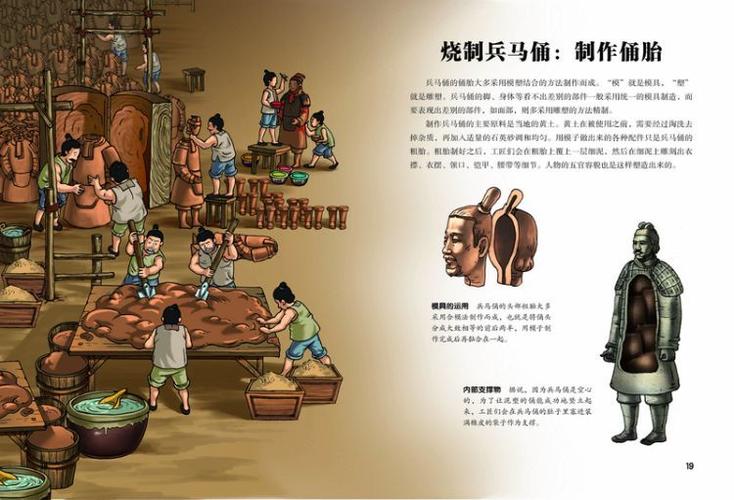
What Were the Terracotta Warriors Made Of?
The Terracotta Army is one of the most iconic and awe-inspiring archaeological discoveries of all time. Standing guard over the tomb of China's first emperor, Qin Shi Huang, these life-sized clay soldiers are a testament to the power and artistry of ancient China. But what exactly are these magnificent figures made of?
Yellow Earth: The Primary Material
Experts have confirmed that the primary material used to mold the terracotta warriors and horses is a type of "yellow earth." This isn't just any ordinary dirt; it's a specific type of loess soil found abundantly in the area surrounding the mausoleum in Xi'an, Shaanxi province, China.
Here's a breakdown of this key ingredient:
- Loess Soil: Loess is a wind-blown sediment, composed primarily of silt-sized particles. It's characterized by its yellowish-brown color, fine texture, and remarkable ability to hold its shape when wet.
- Local Sourcing: The use of locally-sourced loess soil speaks to the logistical brilliance of the project. Transporting vast quantities of building materials over long distances would have been an immense challenge in ancient times. The readily available yellow earth near the mausoleum site simplified the construction process.
The Crafting Process: From Earth to Army
The creation of the Terracotta Army was a complex process involving a skilled workforce and a multi-stage approach:
- Clay Preparation: The first step involved preparing the loess soil. Workers would have mixed the earth with water, carefully controlling the consistency to create a malleable clay.
- Molding Techniques: While some smaller details might have been sculpted by hand, the majority of each figure was created using molds. Archaeologists have unearthed sections of these ancient molds, providing insights into the production process.
- Body Parts in Sections: Large molds were used to create different sections of the warriors' bodies – legs, torsos, arms, and heads.
- Assembly: Once the individual clay sections were partially dried, they were assembled using more clay as a binding agent. This allowed for variations in pose and the creation of individualized features.
- Firing: After assembly and the addition of finer details, the figures underwent a high-temperature firing process in kilns. This hardened the clay, transforming it into the durable terracotta we see today.
- Color and Detail: Traces of paint reveal that the warriors were once brightly colored, adding another layer of realism to their appearance.
Beyond the Yellow Earth: Additional Materials
While yellow earth was the primary component, other materials played crucial roles in the creation and preservation of the Terracotta Army:
- Sand: Fine sand may have been added to the clay mixture to modify its texture and prevent cracking during the firing process.
- Organic Materials: There's evidence that straw or other organic materials were incorporated into the clay, particularly for the core of the figures. This helped to reduce weight and prevent uneven drying.
- Wood and Reeds: The construction of the vast pits that house the Terracotta Army involved extensive use of wood for support beams and reeds for matting layers.
- Lacquer and Pigments: As mentioned earlier, the warriors were once adorned with vibrant colors. Lacquer may have served as a sealant and base for pigments derived from natural minerals.
FAQs
1. Were the Terracotta Warriors made of any special or rare materials?
No, the primary material, yellow earth (loess soil), was abundant in the region around the burial site. This made the construction process more efficient.
2. Why did the terracotta warriors survive for so long?
The high-temperature firing process transformed the clay into durable terracotta. The burial underground also provided protection from the elements.
3. Are the colors we see on some of the warriors today the original pigments?
While traces of original pigments remain, much of the color was lost over time. What we see today on some figures are often remnants or careful restorations.